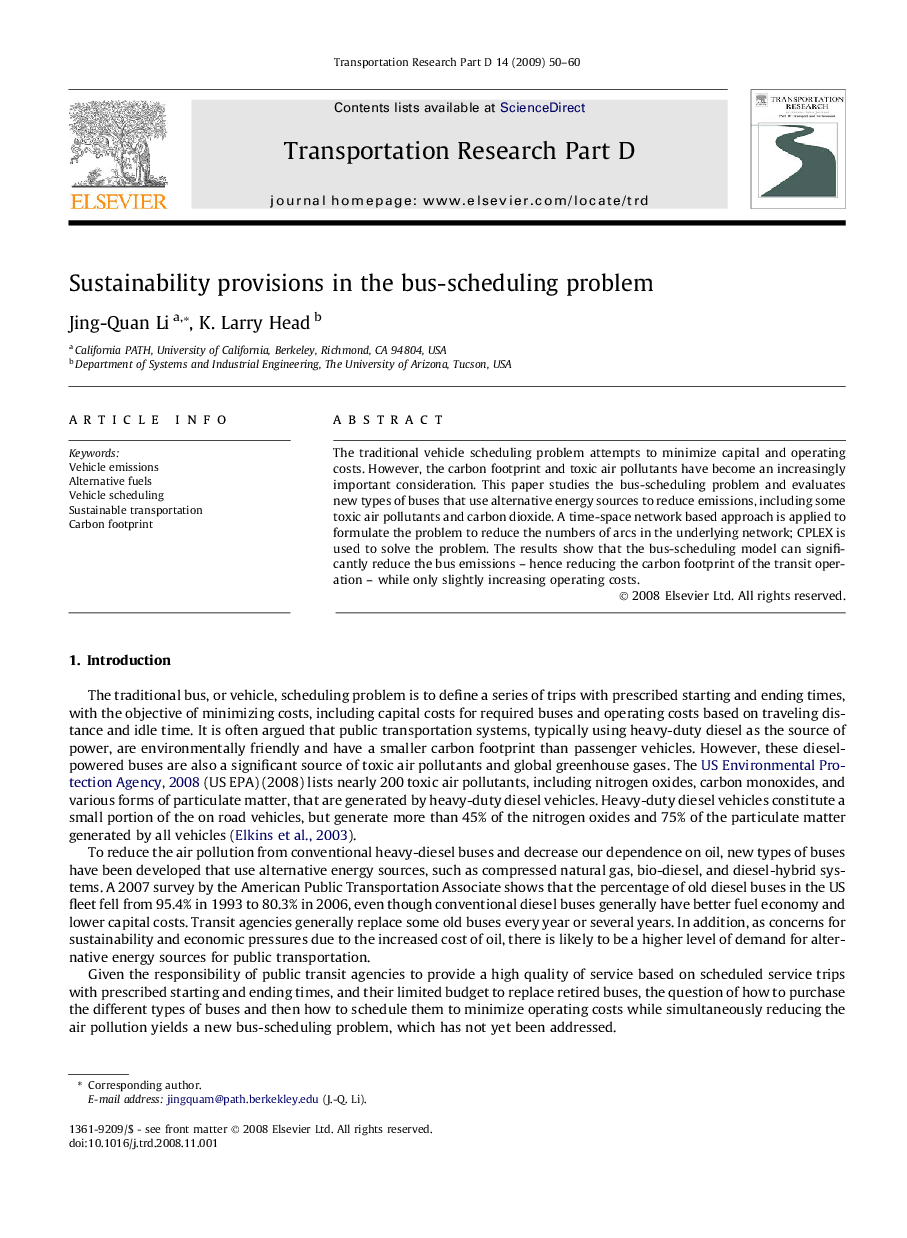| Article ID | Journal | Published Year | Pages | File Type |
|---|---|---|---|---|
| 1066514 | Transportation Research Part D: Transport and Environment | 2009 | 11 Pages |
The traditional vehicle scheduling problem attempts to minimize capital and operating costs. However, the carbon footprint and toxic air pollutants have become an increasingly important consideration. This paper studies the bus-scheduling problem and evaluates new types of buses that use alternative energy sources to reduce emissions, including some toxic air pollutants and carbon dioxide. A time-space network based approach is applied to formulate the problem to reduce the numbers of arcs in the underlying network; CPLEX is used to solve the problem. The results show that the bus-scheduling model can significantly reduce the bus emissions – hence reducing the carbon footprint of the transit operation – while only slightly increasing operating costs.
